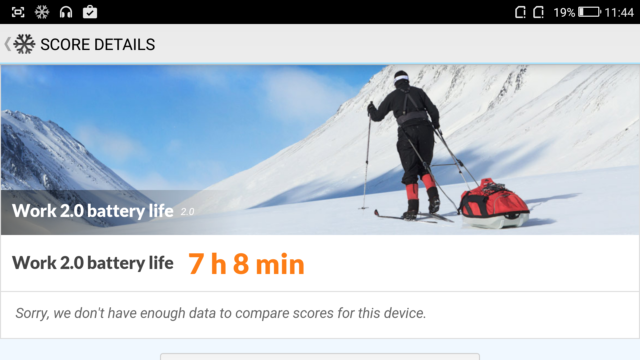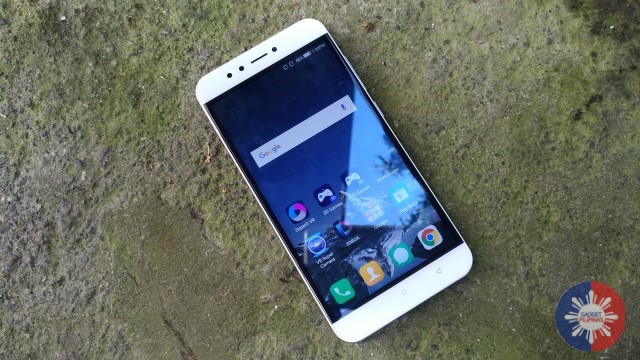When it comes to smartphones, it often comes down to who has the better specs, price, and how much trust a brand has from its customers. Despite this however, there are still devices that try to stand out among the crowd.
The SuperD D1 is an example of these niche devices. It may look like any other smartphone, but it does something that most of the competition can’t. That is, 3D videos and games, without the need for 3D glasses.
But is it all a gimmick? is this enough to persuade people to have a good look at this device, and better yet, actually buy it? We spent some time with the phone, and here’s what we think.
A Package that Builds Anticipation

While you do only get a charger and a data cable (There was no headset on the box of our review unit), these are all packaged in a box that looks premium, the type that builds up anticipation that there’s something good inside. I still hoped for something extra, like a case, or at least a cloth for cleaning the screen.
Good Looks Ruined by Big Bezels

The D1’s design reminds me of Xiaomi’s Redmi smartphones. The metal back houses fingerprint sensor and comes with a matte finish which can get a little slipper when holding the phone with one hand. The camera potrudes, similar to the ASUS Zenfone 3. Then there’s the again, awkwardly placed speaker at the back, which gets covered when the phone is placed flat on the ground.

Up front is a 5.5-inch display covered with 2.5D curved glass, along with the capacitive keys, and the two front cameras (Which we’ll talk about later).

You’ll find the power button and volume rocker at the right, while the SIM tray is housed on the left. And while the buttons do have a good sense of feedback, the wobbliness of the power button in particular makes the device feel less premium.

At the top of the device is a 3.5mm headphone jack, while the bottom houses the microphone and a standard MicroUSB port.
A Well-Balanced Display

The D1 sports a 5.5-inch Full HD display with a balanced color temperature and good contrast. There’s no over saturation here like what you’ll find in an AMOLED display, but it’s not boring as well. Icons and text also remain visible in direct sunlight, provided that brightness is maxed, which is a good thing.
Good for Daily Use, May Throw You Off With Bugs
SuperD D1 Specs:
- MediaTek MT6750T Octa-Core Processor
- 3GB of RAM, 32 GB of Internal Storage Expandable via MicroSD Card
- 5-inch Full HD Display with 2.5D Curved Glass and Gorilla Glass 3 Protection
- 13MP Rear Camera, f/2.2
- 8MP Front Camera, f/2.0 + 2MP Dedicated Camera for Eye Tracking
- LTE, Dual SIM (Hybrid)
- Android 6.0 Marshmallow
- 3000mAh Battery
- Fingerprint Sensor
The D1 isn’t the most powerful phone you’ll find at this price range, but it handles day to day tasks without any issues.
Things like browsing the web, checking your Facebook and Instagram accounts, watching videos on YouTube, and sending emails. The D1 can switch between all these apps with ease, thanks to the 3GB of RAM.

After testing Technika Q, Mobile Legends, and Asphalt 8, i’d say the D1 is just about right for the more casual gamers, but if you’re into the more eye-candy and graphics intensive apps, you’ll have to turn down your settings to a avoid a less than satisfying experience.
Also, do note that there were times when the screen took around 2.5 to 3 seconds to light up after pressing the power button. Hopefully it’s a software issue that can be fixed. Well, you can always use the fingerprint sensor anyway.
Surprisingly Good Camera, At Least During Daytime

I wasn’t expecting anything from the D1’s 13MP rear camera. But I was surprised by the quality of the photos I took, as they were well-detailed, vibrant, and sharp. Night photos were grainy, but are still decent enough.
The front camera isn’t as good, however. Sharpness could use more work, and selfies came out looking overly processed, even when beauty mode is off (I do like that it makes my face look better but, like they say, natural is always good).
Although default camera app only gives you a few shooting modes to play with, Pro mode is still present, which means you still have control over majority of the settings for your shots. One downside that i’ve noticed is that the app only allows for taking 13MP photos in 4:3, and full screen 16:9 shots are limited to only 9MP resolution.
A Fun and Refreshing 3D Experience, But Somehow Limited

The D1 actually has two front cameras: One is the main camera used for selfies, and the other is dedicated for eye tracking, used when viewing 3D content.

You have to see this thing in person and try it out in order to appreciate it. Watching movies in 3D without glasses was actually quite a refreshing experience. Objects were like popping out of the screen, as if you can touch them. The level of immersion is just different. However, in order for it to work, you have to be looking from a correct angle, and you’re the only one who can enjoy it. Anyone else looking at the screen will only see a blurred image.
SuperD has its own store, wherein you can download 3D and VR content. The thing is, the selection is quite limited. For movies, in particular, you’d find that there’s a handful from Dreamworks, and that’s it. Hopefully though, they add more content in the future.

Using the VR Headset, I fired up a couple of games and clips. And though it took me quite a while to get a good fit, The experience was quite enjoyable in general, moving my head around to evade obstacles. I did notice that after a few minutes, the phone had heated up to almost an uncomfortable level.
A Simple and Efficient Take On Android
The D1 runs on Android Marshmallow out of the box, with SuperD’s custom skin on top. It’s eye candy, but at the same time, offers some nifty features such as being able to open a folder in the homescreen, and right then and there, access another folder by tapping on its name, all without having to go back and look for it.
All the switches for Wi-Fi, Bluetooth, etc. can be viewed by swiping upwards from the bottom of the screen, similar to Vivo smartphones. There’s also no app drawer here, so you’ll have to settle with organizing your apps into folders to avoid clutter. Overall, the SuperD’s user interface is fluid, beautiful to look at, and easy to get familiar with.
I did encounter a bug wherein the wallpaper suddenly switched to a black background without me doing anything, and I had to set it back manually. But hopefully it’s just a bug that can be fixed by an update.
Bring a Powerbank Just In Case

The D1’s 3000mAh battery was a little underwhelming, as it only yielded 7 hours of uptime on our test. That translates to almost an entire day at work, gaming excluded. It charges from 0% to full in about 2 hours, which is quite decent.
Verdict
The D1 can perform well as a daily driver. The design isn’t the prettiest, but it works. The display is eye catching, the rear camera takes some good photos, and day to day tasks can all be handled without problems. Its key selling point, which is being able to play 3D videos without the glasses, is actually quite refreshing and fun at the same time, but the small library of available content ruins it.
I’d say this phone is a good step forward in terms of what it can offer. But at the price they’re asking for? There are just too many other options which offer more “useful” features.
The Good
- Rear Camera Performance
- Performance on day to day tasks
- Display Quality
- 3D Video
- Packaging
- Fast Fingerprint Recognition
- User Interface
The Not So Good
- Average Battery Life
- Front Camera Performance
- Small library of 3D content
- Heating issues when in VR Mode
- Speaker Placement
- Price
Emman has been writing technical and feature articles since 2010. Prior to this, he became one of the instructors at Asia Pacific College in 2008, and eventually landed a job as Business Analyst and Technical Writer at Integrated Open Source Solutions for almost 3 years.




















































